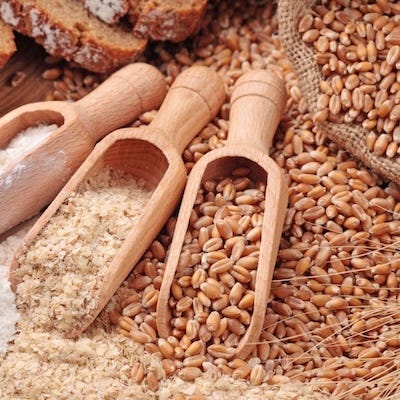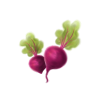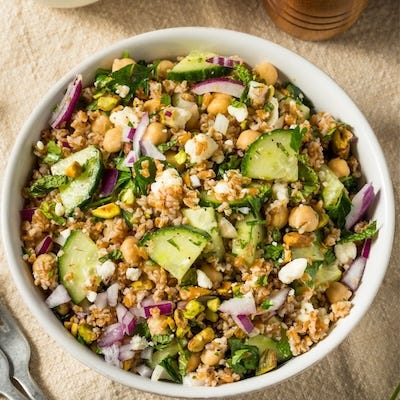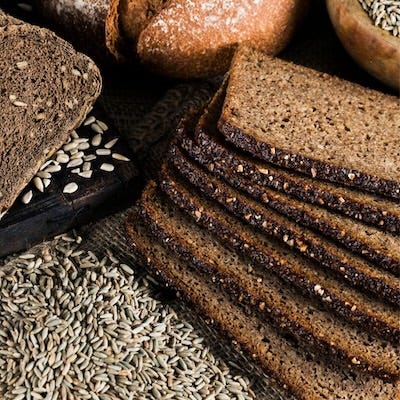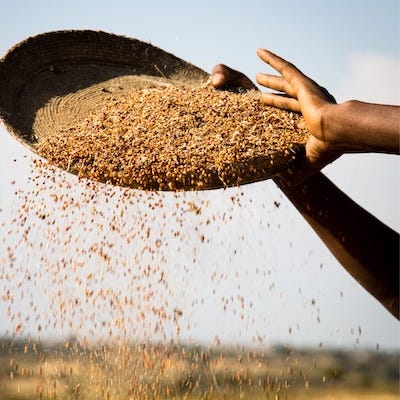Yes, You Can and SHOULD Eat Different Grains
This ONE THING motivated me to start eating differently...
Our Western diet is built around grain. It’s because they’re easy to cultivate, and easy to store. The most popular include:
Corn
Rice
Wheat
If you’re going to cook, chances are rice comes up frequently in your meal plans. They’re incorporated into rice bowls, stir-fry, and compliments almost any dish.
Wheat is another popular grain that shows up in many ways. From bread to cakes and cookies, gluten is what gives wheat its elasticity, and its protein.
Corn is one of the sweetest-tasting grains, the reason it makes its way into breakfast cereals and tortillas. Though nothing tastes better than corn on the cob on a warm summer's day, it’s not the way most of us consume it. Instead, it’s degermed and ground into cornmeal where it can be used in many different ways.
These make up the most popular grains on earth. They are incorporated into almost everything we eat, every meal we consume. Would it surprise you to learn that 60 percent of our current food supply is derived from these three crops?
This is a problem.
Imagine you have hundreds of food sources. If a problem occurs with one, you barely notice it. It doesn’t impact your eating - or the food supply. But when three crops make up the majority of your food supply - and eating - it can be a real problem.
And things are happening. To start, monocropping, GMO, and food supply chain problems are all increasingly causing problems.
Yep, it’s becoming a bigger issue.
This was my wake-up call to alert me to paying attention and making better choices. Working with different grains gives me more flexibility in what I’m cooking for dinner, and I know it’s equally as beneficial to include new food items in my diet.
Each grain has their own benefits, flavors, and nutritional factors. They each can add new dimensions to your meals.
If your meal planning is currently focused on those three grains, it’s time to discover the other options.
Popular Grains
Let’s start with where we are.
Wheat
Arguably one of the most popular grains in the world, wheat is found throughout our food supply. Wheat is high in gluten, though it is important to note that today’s wheat is not the same as it was even a few short decades ago.
Wheat first began to be cultivated by humans thousands of years ago. But it wasn’t until the industrial revolution improved milling and transportation that it became easy and inexpensive to distribute. Pasta and bread became an easy way to feed the masses, and it quickly became one of the most popular items in foods on the “food pyramid.” Newer strains of wheat also contain higher gluten content, which might be adding to the problem.
Rice
Rice is the most widely eaten grain in the world, feeding almost 3.5 billion a day. This includes Basmati, Jasmine, white, brown, long-grain, and wild rice. Increasingly, people are starting to talk about the negative environmental impact.
Traditional rice farming is both methane-intensive and water-intensive. And that’s increasingly becoming a problem, especially in countries where they depend on rice for their livelihoods.
Corn
The sweetest-tasting grains, this can be consumed as a vegetable as well as drying it out and using it as a grain. However, it is most often sold in its refined form, degermed, and ground into cornmeal.
In today’s world, corn is almost always GMO, made up of an estimated 93 percent of the corn planted in the US. Corn on the cob is not, yet most of what is grown and sold is. Field corn is used to produce everything from livestock feed to corn syrup and cooking oil.
Whole Grains
Whole grains offer a lot of choices and a lot of variety.
Barley
Barley has a lower gluten content than wheat, making it less suited for baking leavened products. It is used for flatbreads and making porridge, with the pearled version being a great addition to soups and casseroles.
Buckwheat
While not a true cereal grain, it’s actually a fruit related to rhubarb. Seeds can be harvested and used whole, or ground and used to make a variety of grain-related dishes such as buckwheat pancakes or soba noodles. It’s gluten-free and an excellent source of protein.
Bulgar
Ever ordered a tabbouleh salad? You’ve tasted bulgur first-hand. Bulgur is a precooked, dried, and ground kernel of wheat, usually durum. While sometimes mistaken for cracked wheat, what separates the two is bulgur is parboiled while cracked wheat is not. Because of this, it cooks fast and is a great substitute for bowls when you’re in a hurry.
Oats
One of the oldest cultivated grains, most oats are whole wheat because producers seldom remove the bran from the germ. You can find gluten-free rolled oats, just ensure you do your research so that you buy them from a quality source. They can be used in everything from oatmeal to granola bars to breads.
Rye
Rye is considered a grain because it is the edible seed of the grass plant known as “Secale cereale.” It’s harvested for its starchy seeds to use as a food source, mostly known as rye bread or rye whiskey. It can be processed and used in many forms, including the kernel, hull, berry, and germ. If you use the minimally processed rye berries, it will be the most nutritious. Processing it to a light rye flour means the bran and germ are completely removed, giving it the least amount of nutrition.
New Choices … What’s For Dinner
While these may be new-to-you choices, they aren’t new in the world of grains. Ancient grains are a group of cereals that have stayed mostly unchanged for centuries. While not traditionally used in the US, they are becoming more popular as people search for alternatives. They are less processed, more nutrient-dense, and offer far fewer health challenges than that of mass-produced grains.
Amaranth
Amaranth is a grain-like food with a delicious nutty, earthy flavor. While it’s prepared and used like a grain, it’s actually a seed, as is gluten-free. It’s also a complete source of protein, high in iron, calcium, and fiber.
Farro
Farro is a nutty, hearty grain that comes whole, pearled, or semi-pearled. Combine it with legumes for a complete protein, making it a great addition to your salads and bowls. I have a bag in my cupboard at all times because I often prefer it over rice.
Kamat
Also known as kamut khorasan wheat, it is organically grown, known for its nutrition and ease of digestibility. It’s a great source of protein and fiber as well as many other vitamins and minerals. While it isn’t gluten-free, it is a more digestible form of gluten. It has a sweet, nutty, and buttery taste and firm texture.
Millet
Millet is often labeled whole grain, and is a naturally occurring gluten-free cereal jam-packed with minerals like magnesium and potassium. It’s also an excellent source of protein. Because it can be cooked like rice or quinoa, you can use it as a substitute in similar recipes. It’s also possible to serve it warm as a porridge for breakfast. It has a rich flavor and is easy to digest.
Quinoa
Chances are if you’ve experimented with grains, quinoa is already on your list. I love that you can get a large bag of organic quinoa at your local Costco, making it an affordable option you can use every week. (I even mix it into my cereal!) Quinoa is a small, round grain that looks like sesame seeds. You’ll most likely find it light in color, though black, purple, and red are available. It’s an excellent source of plant-based protein and contains all the essential amino acids, including lysine. It’s versatile and can be used in bowls, salads, and yes, breakfast dishes!
Spelt
Spelt is a species of wheat, sometimes known as hulled wheat. It’s an ancient grain that was popular until industrialization. It’s high in protein and can be used for baking, or added to grain salads. When compared to wheat, it’s slightly higher in zinc and protein, and has a higher antioxidant capacity.
Teff
Teff is the tiniest grain in the world, yet has a rich nutritional profile. It’s been a staple food for thousands of years, originating in Ethiopia. It’s high in protein, dietary fiber, iron, calcium, and magnesium, and is naturally gluten-free. You can use it as a substitute for wheat flour in baking, cook it hot as a porridge, add it to soups and stews for extra nutrition, or incorporate it into veggie burgers for a bigger punch.
Sorghum
Sorghum belongs to the grass family Poaceae, and is a cereal grain that’s small, round, usually white or pale yellow. It’s rich in micronutrients vitamin B1 and B6, copper, iron, magnesium, phosphorus, potassium, selenium, and zinc. It’s low in fat and high in protein. It’s a gluten-free option that gives a stretchy quality and structure, meaning you can replace gluten-containing flour with it and make bread, cookies, and other desserts.
Where can you buy these?
I am constantly looking for small businesses to do business with. Have any ideas? I’d love to hear from you.
One of my favorite sources is Bob’s Red Mill (I’m lucky enough to be a few miles from their headquarters.) Because of their popularity, they are increasingly available wherever you shop. I even found them in New Zealand when we were there! Bob’s is an employee-owned company, which makes me want to shop there even more. And they have so many flour and grain options, it’s a source you can use for much of your baking and cooking options.
Breadtopia is one of those sites you can get lost in. We got heavily into breaking bread over the pandemic and have been hooked ever since. While I have quite a few bread-baking tools already in my kitchen, this site has so many fun things, I might have to make room for even more. Like this Artisan bread starter kit for a long loaf. Hmmm … holiday present? Maybe.
TheFoodNanny will let you try Kamut in a variety of ways. Buy bags of flour, choose whole wheat berries, or give their pancake mixes a go. There is so much good information on this site, you’ll be spending time getting to know how to use this resource better.
Want to explore ancient grains even more? Stop by Bluebird Grain Farms. I’m still navigating their site looking at all their wonderful options. And their recipes …
p.s. Did you like this message? It would mean a lot to me if you’d press the ❤️ below if you liked it, left a comment 💬, or shared it with a friend. I’m trying to grow this publication, and I depend on people like you to do so!
And if you’re new here, Welcome! 💐 I’d love to start sharing my message with you if you’re interested in all things plant-powered, proaging, or finding kitchen joy. Subscribe … and then explore my entire archive! Glad to share with you! 🙋🏼♀️






